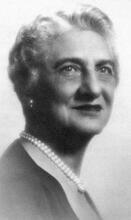Hannah de Rothschild, Countess of Rosebery
A member of the English Rothschild family who married the Earl of Rosebery, a future Prime Minister of England, Hannah was the only child of Baron Meyer Amschel de Rothschild and his wife Juliana. She married Philip Archibald Primrose in 1878 and devoted the rest of her life to her husband and marriage. She supported her husband through his successful political career, along with continuing her father’s collections and traveling the world. She maintained the tradition of philanthropic works that she learned from her parents and remained a loyal Jew, despite marrying a Christian man. According to her husband, Hannah was “very simple, very unspoilt, very clever, very warm-hearted, and very shy.”
Early Life and Family
A member of the English Rothschild family who married the Earl of Rosebery, a future Prime Minister of England, Hannah (b. July 27, 1851) was the only child of Baron Meyer Amschel de Rothschild (1818–1874) and Juliana, daughter of Isaac Cohen (1831–1877). Hannah’s father was the fourth son of Baron Nathan Mayer Rothschild (1777–1836) and though very anglicized in his ways, styled himself Baron Mayer as was the custom among younger sons of the nobility in Europe. Educated in Cambridge, he held the parliamentary seat for Hythe as a Liberal from 1859 until his death. Like his brothers, he bought land in Buckinghamshire. On the estate in Mentmore he commissioned James Paxton, the most fashionable architect of the time, who had designed Crystal Palace for the 1851 Great Exhibition, to build his home. The first stone of what was to become known as Mentmore Towers was laid by Hannah at the age of nine months, and it was to become the most lavish of the English Rothschild grand houses of the time.
Hannah’s father was a great collector of paintings and objets d’art, which he kept at Mentmore. Hannah learned much about art from him. He was also a patron of horseracing, his horses winning the Derby, the Oaks, and the St. Leger in the same year. According to family correspondence, Hannah spent many of her childhood years riding and hunting; because of over-exertion in these activities she had to spend one year totally on her back. From her mother she learned the many social skills of a grand hostess, as well as music. Hannah, who had a fine singing voice, often also accompanied her father to racing and yachting events, frequently deputizing for her mother during the latter’s illness. At the age of seventeen, it was she who formally received the Prince of Wales when he visited Mentmore. When her father died in 1874, Hannah inherited two million pounds in cash, Mentmore, and its priceless collection of art and furniture. Her mother died in 1877 on her yacht in the Mediterranean, after a long illness.
Marriage and Personal Activities
On March 20, 1878, Hannah married Philip Archibald Primrose, fifth Earl of Rosebery (1847–1929), to whom she had apparently been introduced when she was seventeen years old by Mrs. Disraeli at Newmarket. The couples shared many interests, including horseracing and collecting art and books. News of the impending marriage caused great distress in the Jewish community and there were articles in the Jewish press decrying the match, although this was not the first intermarriage within the English Rothschild family. Rosebery’s mother, the Duchess of Cleveland, who disliked Jews and made no secret of her antipathy, disapproved wholeheartedly. The wedding, which took place at Christ Church in Piccadilly and was preceded by a civil ceremony, was one of the major social events of the year. The Prince of Wales attended and Prime Minister Lord Beaconsfield (Benjamin Disraeli), who had been a constant visitor at her parents’ home, gave the bride away. The couple’s older daughter was later named Sybil (1879–1955) after the heroine of Disraeli’s novel.
According to her husband, Hannah was “very simple, very unspoilt, very clever, very warm-hearted, and very shy. … I never knew such a beautiful creature.” After her death, Edward Hamilton, a close friend of Rosebery from his days at Eton, opined that “her judgment as a whole was singularly sound and calm … having the power of seeing through people quickly. She gauged the character of her fellow creatures with great perspicacity.”
Hannah was to devote the rest of her life to her husband and her marriage. In the words of her cousin Constance Battersea, she became “from the outset of her married life one of the most devoted and unselfish of wives who ever lived.” Between 1879 and 1883 the couple had four children, two boys and two girls. She entertained lavishly for her husband at Mentmore, at Landsdowne House, and at the London home in Berkeley Square that Rosebery bought in 1885. She was very ambitious for her husband and lived to see him enter the government in 1881, after helping Gladstone with his campaign in Midlothian, serving as Undersecretary of State for Home Affairs, then as Lord Privy Seal and finally as Foreign Secretary in 1886. In 1889 he was elected chairman of the newly formed London County Council.
Hannah continued her father’s collecting and made catalogues of the items displayed at Mentmore. Her notes accompanied the sale of most of the contents of Mentmore when they were sold in 1977 at Sotheby’s in what was dubbed the sale of the century. She also helped her husband build up his rare book collection. She was very involved in the flowers and plants of the gardens at Mentmore and in the aviary. In 1883 she traveled round the world with her husband, reaching Australia and returning by way of India.
Philanthropic Work
Hannah maintained the tradition of philanthropic works that she had learned from her parents. At Mentmore she built many model cottages and schools in and around the estate. The cottages still have an “H de R” cipher on their gables. The schools were both built and operated at her expense. Among her many charitable activities she supported the Institution for the Oral Instruction of the Deaf and Dumb and supervised the fund for the relief of the sick and wounded in the campaigns in Egypt and the Sudan (1882–1885). Many of her public activities centered on Scotland, where she frequently spent time at Dalmeny House, seat of the Rosebery family near Edinburgh. At the request of Queen Victoria, she served as President for Scotland of the Jubilee Nurses Institute. She was an active organizer of the Scottish Home Industries Association and in 1886 she was one of the conveners of the Women’s Industries Section at the Edinburgh International Exhibition.
Jewish Life
Hannah remained loyal to her faith as a Jew after her marriage and was a member of the Central Synagogue in London. She attended synagogue services on the anniversary of her parents’ death. On her trip to Australia with her husband she went to services at the synagogue in Melbourne. She was involved in many Jewish charities and founded the Club for Jewish Working Girls in Whitechapel. Her cousin Lady Battersea wrote that “during her married life she hardly, if ever, attended a church service and continued to support generously all the Jewish institutions in which she had been interested. However she felt clearly that her four children should be brought up in their father’s religion.”
Her children later related how their father honored his wife’s religion: at the end of each Day of Atonement, Lord Rosebery would take up to her bedroom a tray of food to break her fast and then they would sit together quietly talking for the rest of the night.
After twelve years of marriage, the Countess of Rosebery died at Dalmeny on November 19, 1890, at the age of thirty-nine, from typhoid fever complicated by Bright’s disease. She was buried in the Jewish cemetery in Willesden in London with full Jewish rites, although it was apparent from a note he wrote to Queen Victoria that this was particularly painful for her husband. Lord Rosebery was deeply affected by his wife’s death, declaring that “I have lost the best wife man ever had.” For the rest of his life, he used notepaper with black borders and spent every anniversary of her death alone. He withdrew from politics for some time after her death but later returned to his position of Foreign Minister in a new Gladstone administration, becoming Prime Minister between March 1894 and June 1895.
Battersea, Constance. Reminiscences. London: Macmillan and Co., 1922.
Bermant, Chaim. The Cousinhood. New York: The Macmillan Company, 1971.
Cohen, Lucy. Lady de Rothschild and Her Daughters. London: John Murray, 1935.
Cowan, Anne and Roger. Victorian Jews through British Eyes. Oxford: Oxford University Press, 1986.
Davis, Richard W. The English Rothschilds. Chapel Hill, North Carolina: University of North Carolina Press, 1983.
James, Richard Rhode. Rosebery: A Biography of Archibald Philip, Fifth Earl of Rosebery. New York: Macmillan Company, 1964.
Roth, Cecil. The Magnificent Rothschilds. London: Literary Licensing, 1939.
Wilson, Derek. Rothschild: The Wealth and Power of a Dynasty. New York: Scribner, 1988.


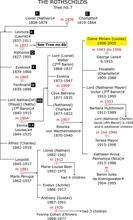
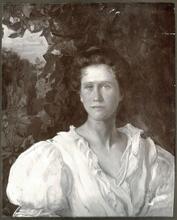


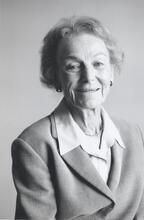
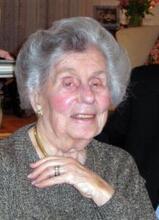
![roisman.jpg - still image [media] roisman.jpg - still image [media]](/sites/default/files/styles/medium/public/mediaobjects/roisman.jpg?itok=7iKIF0ev)



